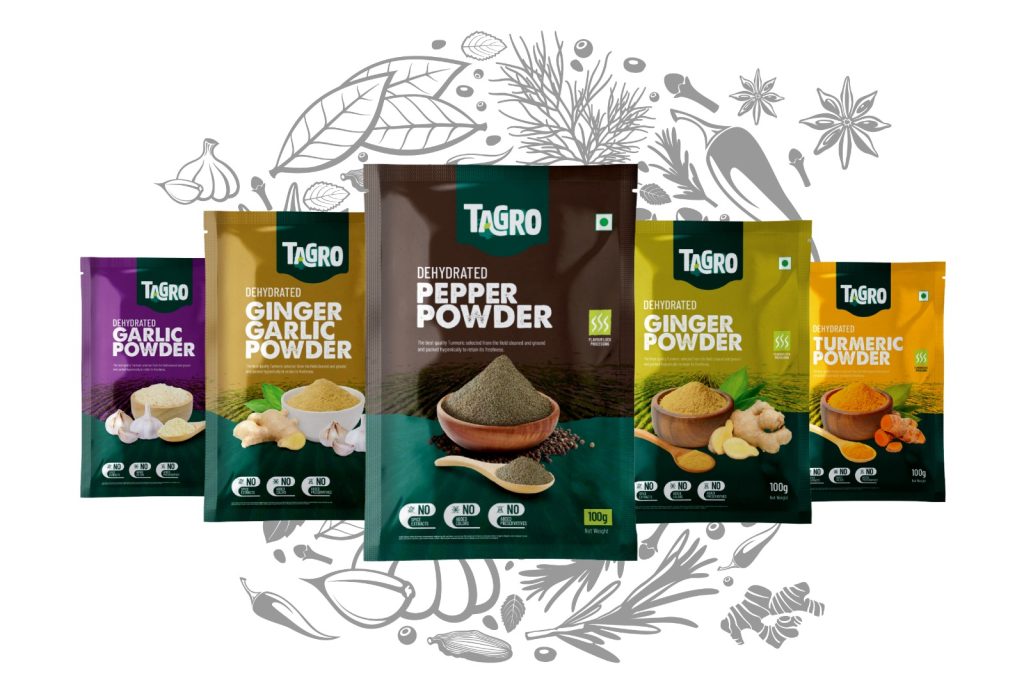
TAGRO™ .. PREMIUM DEHYDRATED SPICES & SNACKS
Dehydration is one of the oldest methods of food preservation, though methods for drying food have become sophisticated over time. For many people, dehydrating food at home is a convenient way to preserve foods.
Dried foods have more calories on a weight-for-weight basis because of their nutrient concentration. For example, 100 grams of fresh apricots has 51 calories, whereas 100 grams of dried apricots has 260 calories. Nutritive value, as well as flavor and appearance, is best protected by low temperature and low humidity during storage.

How It Works?
- Water Removal – Stops microbial growth, keeping food fresh.
- Dehydration Methods – Includes sun drying, ovens, electric dehydrators, air drying, and solar drying.
- Energy Considerations – Some methods consume more energy than others, making sun drying the most cost-effective.
Impact on Nutrition
Heat and air exposure can destroy Vitamins A & C. Sulfite treatments help retain nutrients but may reduce thiamin levels.

Dehydrated Foods – Lightweight, Nutritious & Long-Lasting
Dehydration removes moisture from food, preventing the growth of molds, yeast, and bacteria. This extends shelf life and preserves food naturally.
Why Choose Dehydrated Foods?

- Prevents Spoilage – No water means no microbial growth.
- Lightweight & Easy to Store – Perfect for campers and hikers.
- Versatile Usage – Ideal for snacks, soups, stews, and casseroles.
- Nutrient Retention – Minimizes nutrient loss with proper techniques.
